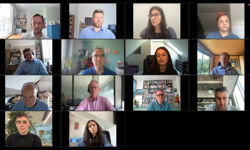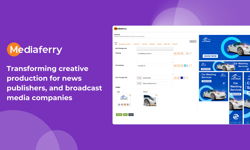
I was playing around with ChatGPT the other day, as you do. I asked it to tell me what the biggest threat to press freedom in the UK was, in 100 words.
It gave me: “The biggest threat to press freedom in the UK is the concentration of media ownership, government surveillance and restrictions, and economic pressures. A small number of media corporations and individuals control the majority of newspapers, limiting diversity of viewpoints. The government’s use of surveillance powers to track journalists and their sources creates a chilling effect on investigative journalism. Economic pressures and the decline of print media have also impacted press freedom.”
Bland and a bit colourless, but incredible, nonetheless, albeit actually 71 words.
At The Publishing Show recently, Nic Newman of the Reuters Institute for the Study of Journalism told attendees to forget about the metaverse and focus on AI, because it is truly transformative. It will be, he said, the story of the next five years.
The use of generative AI in journalism poses an existential threat to publishers, so, he continued, we need to make, “our journalists more human, more distinctive and more trusted”. As an industry, we are moving beyond ‘digital transformation’ into an era of ‘content transformation’.
Some publishers are already using AI to create stories – these tend to be where data-based information, like weather forecasts, stock prices, sports results, can be compiled more quickly and more accurately by a machine than by a human. There’s clearly value in getting AI to ‘write’ these stories, thereby freeing up journalists’ time for more creative endeavours.
But the tricky bit is, where do you draw the line? What type of content won’t you allow AI to create?
Emily Bell, director of the Tow Center for Digital Journalism at Columbia University’s Graduate School of Journalism, wrote in the Guardian recently, “For the purposes of journalism, they can create vast amounts of material – words, pictures, sounds and videos – very quickly. The problem is, they have absolutely no commitment to the truth. Just think how rapidly a ChatGPT user could flood the internet with fake news stories that appear to have been written by humans.”
As with so many of the challenges publishers have faced over the last few years, part of the answer lies in clear labelling. If AI has been used in the creation of a story then it needs to be labelled: ‘created by AI, checked by humans’. Where the content has been created just by humans, then we must emphasise that and celebrate the author.
Premium publishers should agree and adopt best practice labelling standards across all their platforms and educate readers early. Tell people that, unless specifically attributable to a verifiable human, that they should assume the content they are reading is robot-written.
And we need to be quick about it.
Of course, AI is not just about content creation – where much of its value will lie for publishers is as a business tool, enabling better personalisation and targeting of marketing messages and the automation of routine tasks.
When I prepare an article for publication on our website, apart from read and edit the piece, which I can’t leave to AI, I do some formatting work on it. I go through a number of clearly defined steps which I repeat for every article we publish.
Very routine, very labour intensive, and, perhaps, not the best use of my time. With tools like ChatGPT, I will be able to create a single set of instructions that I can apply to each article and the system will then give me back the correctly formatted text in seconds. Lots of time saved, which I can profitably deploy elsewhere.
The potential for good and bad is there in equal measure. We need to harness the good and mitigate the bad.
An abridged version of this article was first published in InPublishing magazine. If you would like to be added to the free mailing list to receive the magazine, please register here.










